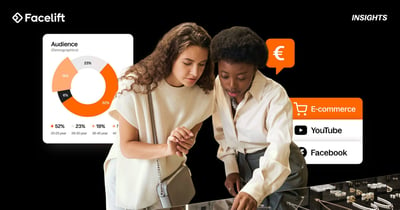Among the early steps your social media and content marketing teams will take along their path to digital success is the identification of your target audience and the thorough analysis of buyer demographics that comes with it.
Who are you trying to reach? If you don’t know your audience, your campaign won’t get very far.
Before you begin creating your content plan you should be able to ask yourself and clearly answer:
Who am I marketing to?
-
What problem(s) does my product or service solve for my customers?
-
When are the best times in which to reach them?
-
Where are my followers or customers located?
-
Why should my customers buy my products?
-
How can we continue to support our campaign moving forward?
Remember: each social media platform you use may require different answers to these questions.
Creating buyer personas
Creating personas is a great way to simulate potential followers, try to get inside their heads, find out what makes them tick, and what they want to solve.
Buyer personas are a series of hypothetical customers that would be likely to use your product.
Example:
A gym is opening a second location and is trying to attract new clients. They create buyer personas by theorizing a small group of hypothetical members featuring basic demographics based on their targets, website visitor data, and social media followers. Their marketing team thinks of six ideal clients including:
Tom:
36 years old, teacher, married, two children. Looking for a convenient gym location and reasonable rates for casual use. Most active on Instagram and Facebook
Claus:
17 years old, high school athlete, works out daily in the evenings, parents pay for membership. Prefers Instagram and TikTok.
Lori:
29 years old, tech startup CEO, looking for early morning cardio and weekend group martial arts. Masters degree. Prefers Instagram, LinkedIn and Twitter. Lori is a vegan.
Stephan:
58 years old, city-tour helicopter pilot, high school diploma, two adult children, has health concerns due to weight. Prefers Facebook.
Zoe:
24 years old, master's student and part-time hotel receptionist. Wants a gym where she feels less self-conscious and receives less unwanted attention. Uses Instagram and Pinterest
Margaery:
40 years old, police officer, two children, high school diploma, moderate to heavy gym user due to work fitness requirements. Uses LinkedIn and Facebook the most.
Persona breakdown:
Buyer personas can be made extremely granular, but most only require basic demographics.
-
Age
This demographic says a lot about where a potential buyer is in life. For example, it can be expected that 20 somethings are more likely to be digitally active but also may have less disposable income than older buyers.
-
Job
This indicates time and disposable income. Tom works all day, grades papers all evening, and has his partner and children. Claus, on the other hand, is not working, and does pay his own membership fees. In this case, he influences the decisions of his parents, but is not the ultimate buyer.
-
Education
Level of education can say something about the way that individuals may react to marketing efforts or how they prioritize certain elements of their lives.
-
Lifestyle
The way in which a buyer lives his or her life will affect their decisions. In this example, some personas have different motivations to exercise than others. Lori's veganism is an indicator of her life choices, and Stephan's health is a concern to his family. Social media preferences can also fall into this category.
Each of these personas has reasons to look for a new gym. It is the company's content and social media team's job to create a campaign, or multiple campaigns, that include content that can appeal to each of them.
When you go to create buyer personas for your strategy, you can construct them by taking existing data from your marketing efforts, checking website data, social media performance, and even speaking directly with your customers! Sit down with your team as a whole and brainstorm your ideal clientele.
It can also be a lot of fun!
Tools such as Google Analytics can be used to monitor demographics and track the buyer journey from entry to your website. HubSpot maintains an excellent buyer persona creation tool, which you can use by following this link.
To read more about building your company's content campaign from scratch, please download our complete PDF guide.





